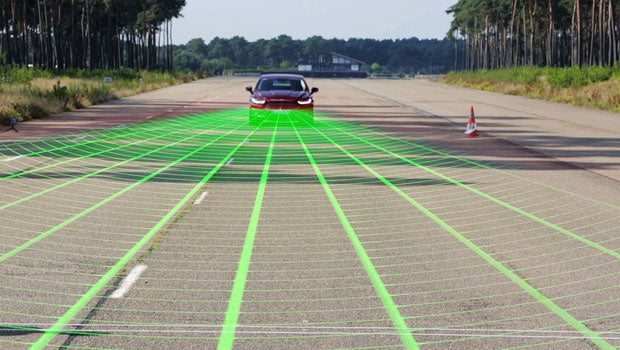Ford’s new car can detect pedestrians to avoid crashes

They may not drive themselves yet – not legally, anyway – but cars are doing more and more of the hard work for us. Ford’s new tech could even save your life.
It’s a new driver assist system that hopes to stop cars crashing into pedestrians. Or if it can’t do that, lessen the impact.
It’s called Pre-Collision Assist with Pedestrian Detection, and uses a radar near the bumper and a windshield-mounted camera to scan the road ahead. If a collision looks likely, it will ping a visual and audible warning to the driver. (While it’s probably not “Look out you berk!” we can imagine it’s something to that effect.) Ignore these, and it’ll slam on the brakes.
So how does it know it’s a pedestrian ahead? It checks the visual information against a database of pedestrian shapes to distinguish people from typical roadside scenery and objects.
Pre-Collision Assist aims to avoid rear-ending into the car in front, while Pedestrian Detection keeps an eye out for pedestrians at low speeds.
Ford tested the tech on closed tracks using manikins as pedestrians, then took it out on the roads for months.
“This real-word testing was an important part of the development, because pedestrians in an urban setting can present a wide range of potential situations,” Scott Lindstrom, Ford manager, Driver Assist Technologies, said in a statement. “We covered more than 300,000 miles on three continents that included a wide range of settings and situations.”
The tech will make its debut in the 2015 Ford Mondeo, which will hit the garage forecourts this year.
Read more: Audi self-driving car hits 149mph

